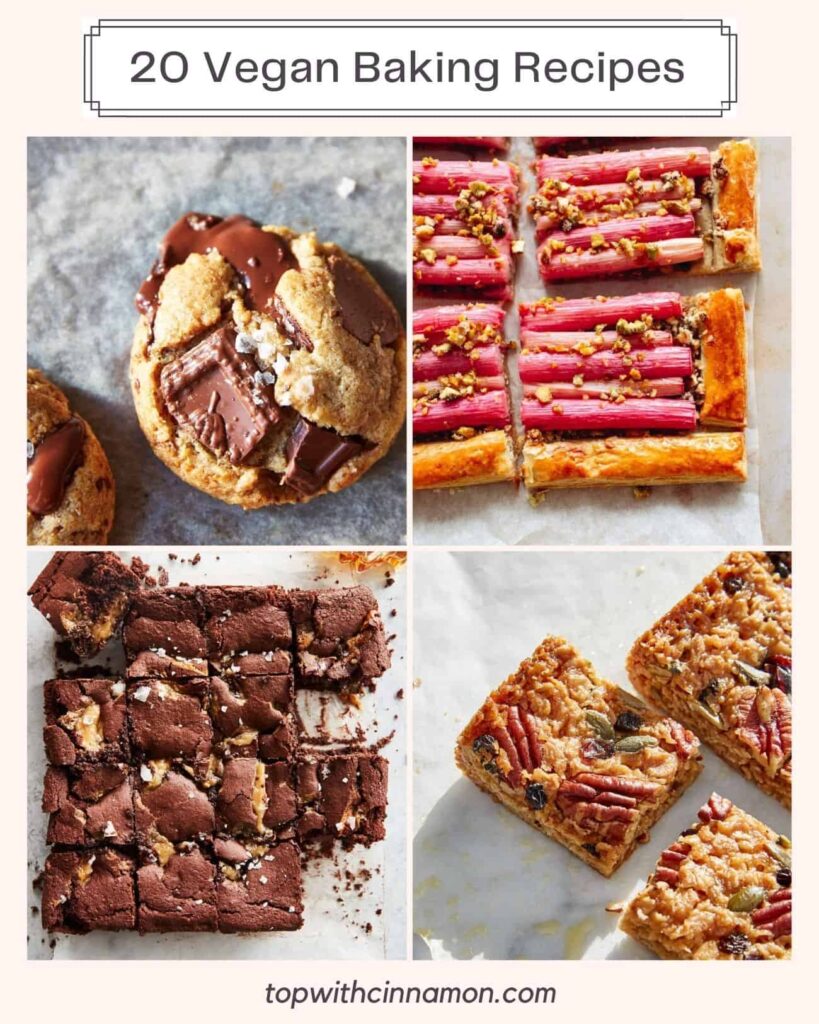Delicious and Simple Vegan Baking Recipe for Every Occasion

Introduction
Welcome to our easy vegan baking recipe guide! Whether you're a seasoned vegan or just starting out, we have the perfect recipe for you. Vegan baking doesn't have to be complicated or time-consuming - we believe that anyone can create delicious vegan treats with just a few simple ingredients. Join us as we explore the world of vegan baking and discover how easy and enjoyable it can be!
Why Choose Vegan Baking?
Vegan baking is not only a great way to cater to a vegan lifestyle, but it also offers a range of benefits. By choosing vegan baking, you're making a conscious decision to reduce your impact on the environment and support animal welfare. Additionally, vegan baking allows you to experiment with new flavors and ingredients, creating unique and delicious treats that everyone can enjoy.
Benefits of Vegan Baking
- Healthier Options: Vegan baking often utilizes healthier ingredients such as whole grains, nuts, and fruits, making it a great choice for those looking to indulge in guilt-free treats.
- Allergen-Friendly: Vegan baking avoids common allergens like eggs and dairy, making it suitable for those with allergies or dietary restrictions.
- Eco-Friendly: By choosing plant-based ingredients, you're reducing your carbon footprint and supporting sustainable farming practices.
Ingredients for Easy Vegan Baking
To get started with vegan baking, you'll need a few key ingredients. Here's a list of essentials:
- Flour: Opt for all-purpose flour or try alternatives like almond flour or whole wheat flour.
- Sweeteners: Use natural sweeteners like maple syrup, agave nectar, or coconut sugar instead of refined sugar.
- Plant-Based Milk: Choose from a variety of plant-based milk options such as soy milk, almond milk, or oat milk.
- Oil: Use vegetable oil or coconut oil as a substitute for butter.
- Leavening Agents: Baking powder and baking soda are essential for achieving the perfect rise in your baked goods.
Step-by-Step Instructions
Now that you have your ingredients ready, let's dive into the step-by-step process of vegan baking:
- Preheat: Preheat your oven to the required temperature mentioned in your recipe.
- Mix Dry Ingredients: In a bowl, combine your dry ingredients such as flour, sugar, baking powder, and salt.
- Mix Wet Ingredients: In a separate bowl, mix your wet ingredients like plant-based milk, oil, and any extracts or flavorings.
- Combine: Slowly pour the wet ingredients into the dry ingredients, stirring until well combined.
- Bake: Transfer the batter to a greased baking pan and bake according to your recipe's instructions.
- Cool and Enjoy: Once baked, allow your treats to cool before indulging in the deliciousness of vegan baking!
Recipe Variations
Vegan baking offers endless possibilities for creativity and flavor. Here are a few recipe variations to inspire your baking adventures:
- Chocolate Chip Cookies: Replace traditional chocolate chips with vegan chocolate chips or try adding chopped nuts for an extra crunch.
- Blueberry Muffins: Incorporate fresh or frozen blueberries into your muffin batter for a burst of flavor.
- Vegan Brownies: Use avocado or banana as a substitute for eggs and enjoy fudgy, decadent brownies.
Common Vegan Baking Mistakes and How to Avoid Them
While vegan baking is relatively straightforward, there are a few common mistakes to watch out for:
- Dense or Dry Texture: Ensure you're using the correct measurements and follow the recipe closely to avoid a dense or dry texture.
- Lack of Binding: In recipes that require eggs, use substitutes like mashed bananas, applesauce, or flaxseed mixed with water.
- Overmixing: Be careful not to overmix your batter, as this can result in tough or rubbery baked goods.
Conclusion
With our easy vegan baking recipe guide, anyone can enjoy the delights of vegan baking. Whether you're a vegan or simply looking to try something new, vegan baking offers a range of benefits and delicious treats. So gather your ingredients, follow our step-by-step instructions, and let your creativity shine in the kitchen!
F.A.Q.S.
1. Can I substitute regular flour with gluten-free flour?
Yes, you can substitute regular flour with gluten-free flour in most recipes. However, keep in mind that the texture and taste may vary.
2. Can I use almond milk instead of soy milk?
Absolutely! Almond milk is a great alternative to soy milk and can be used interchangeably in most recipes.
3. Is vegan baking healthier than traditional baking?
Vegan baking often utilizes healthier ingredients and avoids animal products, making it a healthier choice for many. However, moderation is still key.
4. How can I make my vegan baked goods more moist?
To make your vegan baked goods more moist, you can add ingredients like applesauce, mashed bananas, or vegan yogurt to your recipes.